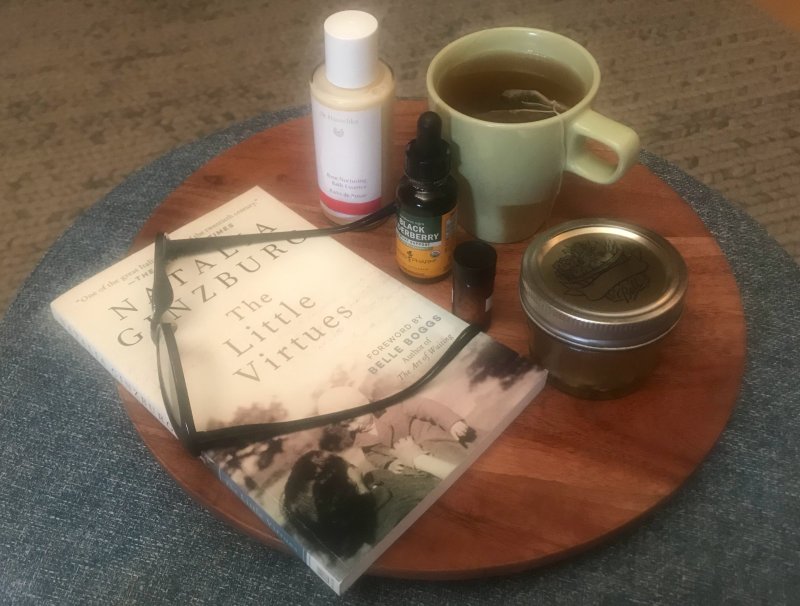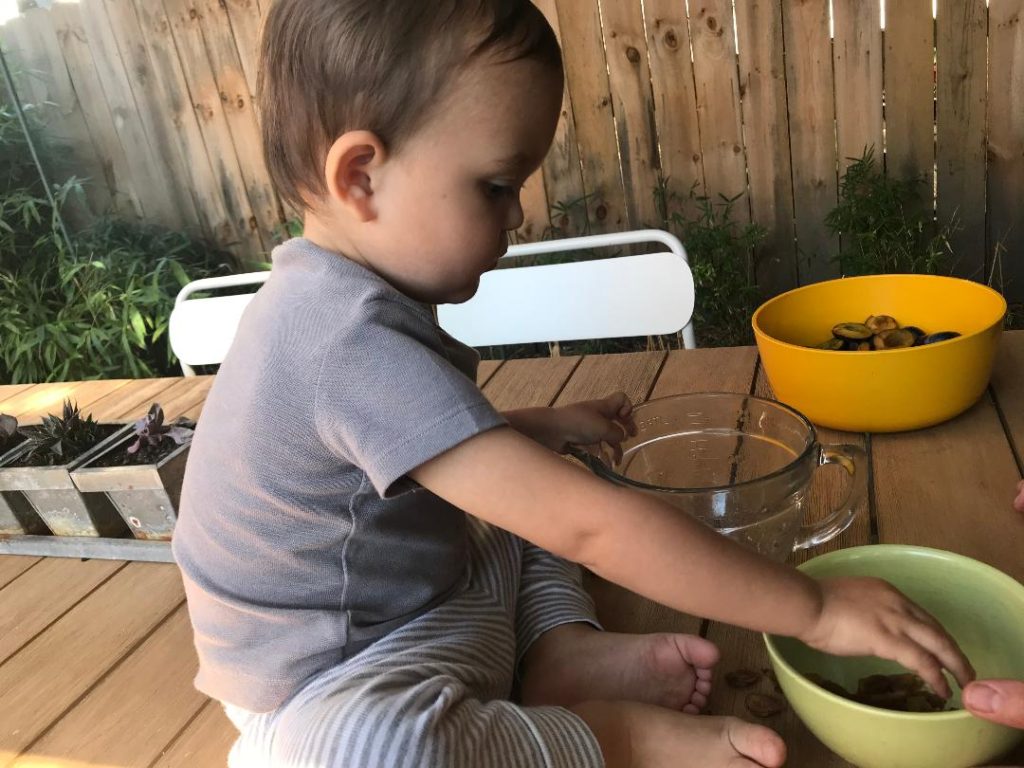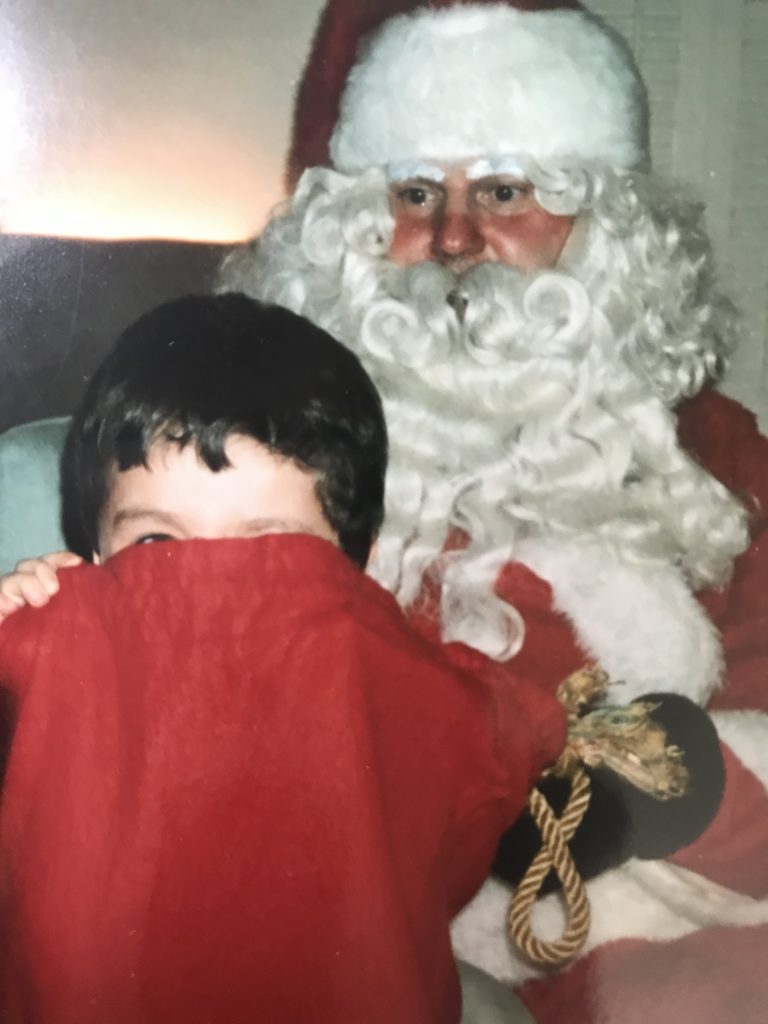After recovering from illness, I noticed a big surge in energy or life force. The day I felt better, I cleaned my home from top to bottom, went cross country skiing, and stitched a doll for my grandson with energy to spare.
It got me thinking about self care and its effects on my energy. What made me feel better after I was sick – even better than before?
When we were ill, we ate simple foods, wore comfortable clothing, kept the lights dim, covered up with warm blankets, and rested to avoid stressing the body while it was engaged in healing. Our bodies and senses were nourished without being over-taxed.
These recovery practices supported not only the physical body, but the soul and spirit bodies as well – replenishing energy reserves.
To create a healing program of self care that rebuilds the energy body, these four practices can help.
Consider the energetic quality of what you are consuming. Fresh, organic food has more energetic value than frozen, canned or commercially grown food. The same with body care products that are absorbed through the skin and clothing that touches it. Quality matters in the products we consume that impact the physical body.
Establish rhythms of home recovery that involve sleeping, eating, walking, bathing, and taking remedies in a routine way that increases their value. Healthy habits build energy and are comforting, more so than random ones. They strengthen the energy body
Pay attention to the sensory environment and soul comforts- lighting, temperature, aromas, warmth (within and without) as well as input from books and screens. To choose a subdued sensory experience, to take in uplifting stories and avoid stressors, is a way to tend the soul.
Maintaining a positive viewpoint, to not dwell on thoughts of despair or fear, but focus on of an attitude of gratitude and non-resistance strengthens the spirit. Thoughts become habits. They create our attitudes and our life experiences.
These healing practices made deposits in the energy bank. Without working or engaging outside the home except daily walks, we made more deposits than withdrawals from the energy reserves. Energy was focused on healing until the symptoms resolved and then, there was an overflow.
What adults need to recover from illness, stress or trauma are what we strive to provide young children who are building their energy bodies. As in the healing practices above, we want our young children to have high quality food, clothing, medicines and a rhythmic life. We keep their bodies warm and their souls nourished by loving care. avoiding exposure to adult stressors, to the best of our ability.
But children may resist. Their wills are strong but unschooled and they test the boundaries to know where they are. Adults who are sick, stressed and disgruntled may also resist doing what is in their best interests. How are they alike?
When we are young, we are all children. We outgrow the phase of childhood but retain an inner child. An adult who is noncompliant may have an inner child seeking attention. Perhaps we can learn from early childhood practices how to tend our inner child, avoid overwhelm, and do what it is in own our best interests.
When communicating with young children, keep it simple. They need to know the plan for the moment, no more than that. Too much information leads to overload. We can say, we are having dinner, taking a bath or going to sleep. I have found use of the pronoun “we” builds a sense of cooperation as in we are in this together.
Then if the child does not cooperate, do not resist the rebellion but rather acknowledge it. I see you are upset or unhappy or wish you could continue playing. If we don’t resist what is happening in the emotional realm, the struggle is one-sided and loses power. But if we fuel the child’s resistance with our resistance, it escalates.
When we acknowledge emotions and carry on with the plan of what “we” are doing, the child feels safe that adults are both in charge and allowing the child’s emotional experience. There is nothing to push against; they are more apt to cooperate.
On the other hand, having emotions decide what happens makes children feel unsafe. On some level, they know tantrums mean that they need something they cannot express. The need is still there after the tantrum so why resist? The adult can observe the child and say, for example, it looks like you are tired. Let’s get ready for bed.
Then if the child resists, acknowledge the emotions, as in I see you want to keep playing with your toys. Stay calm. Pause and affirm, we are getting ready for bed now and lend a hand. If the child does not accept a hand, the adult can pick them up and say in a spirit of cooperation, I will help you.
Skillful communication is key in working with children as well as adults whose inner child is calling for attention. which happens more often in times of stress and uncertainty. Adults who have not learned self-regulation may lack skills in self talk that supports it and have difficulty teaching it to children who learn through imitation.
Children depend on adults for guidance in what to do and how to do it. When the adult’s inner child is triggered, clarity is often lacking and a dynamic of resistance can become a pattern.
Communication based on non-resistance leads to cooperation. It creates calm. Perhaps what we have to do to end a struggle, is to not engage in the struggle, to stop resisting what is. Stay neutral, connected and on track.
How does non-resistance play into our approach to young children, self care, and the energy body? In my experience, when I practice what helps create a strong energy body, but emotionally resist whatever is happening, it diminishes the efficacy of the practices.
I have come to conclude that non-resistance is often the missing link in energy-building, energy-saving, and energy-flow. If what we resist persists, what we allow, resolves in time. It does seem counter-intuitive, I know. But don’t take my word for it, do your own experiments.
Consider that humans have an energy body which brings life force to the physical body, enabling growth and development.
Young children are in the process of building energy reserves for a lifetime. The same practices that support this development in young children, support adults in recovering from illness or trauma – when they need to restore energy or their inner child is triggered.
When we don’t resist what comes, for example children’s emotions or symptoms of illness and we stay in the flow of energy, we have more life force available for what we need to do to recover from illness or for young children, to learn about themselves and the world.
Why struggle against what we cannot change? Better to put energy into changing what we can. It’s amazing what we can accomplish when our energy body is strong! Resistance siphons off energy when we need it most – to deal with challenges.
When we get sick or run down, we can replenish our energy body by not resisting what is happening and giving ourselves what we need.
Perhaps we all need a dose of what’s good for young children at this time! We may not be able to end the pandemic or social conflict, but we can take care of ourselves and build energy reserves to address what is ours to do.
Try the tips above, and if the voice of the inner child wanting things to be different resists what is, stay connected. Say I hear you.
Then carry on. Conserve your energy. Stay in the flow. Build your life force.
It is your super fuel!




